History and Military History (Part 1)
The U.S. Army Chief of Staff’s Professional Reading List
The U.S. Army Chief of Staff’s Professional Reading List is more than just a collection of books—it's a roadmap for soldiers, Army civilians, and Military Reading Room subscribers (yes, you) looking to deepen their understanding of leadership, strategy, and the profession of arms. We are using a version of the reading list from approximately ten years ago. While the current Army Chief of Staff, General Randy A. George, has been recommending articles, we could not find an updated comprehensive reading list. However, we will include one of General George’s recommended articles in each release of the Army Reading List.
Organized into six categories, this list offers a structured path to exploring key military concepts and historical lessons:
Strategic Environment
Regional Studies
History and Military History
Leadership
Army Profession
Fiction
Each book on this list offers valuable insights into military strategy, history, and leadership, providing readers with a deeper understanding of the Army’s legacy and the enduring role of landpower in warfare. As the strategic landscape grows more complex—where emerging threats and evolving missions challenge conventional warfighting—ongoing study and critical analysis remain essential for military professionals and those seeking to grasp the art and science of armed conflict.
The Army Reading List is extensive, so we’ll break it down one section at a time, with each section taking several posts. We will start with History and Military History. But first, we will start with an article.
Chief of Staff of the Army Recommended Articles
Leadership Camouflage – CSA Article of January 2025
By MAJ Shawn Robertson
MAJ Shawn Robertson's Leadership Camouflage challenges traditional leadership models that separate decision-makers from their teams, advocating instead for leaders to integrate fully into their units. Drawing inspiration from The Captain Class (Sam Walker, 2016), he argues that the most effective leaders do not stand apart but embed themselves within their organizations, functioning as both teammates and guides. By reducing hierarchy, engaging directly with subordinates, and demonstrating servant leadership, these “camouflaged” leaders foster trust, authenticity, and increased commitment from their teams. This approach allows leaders to gain better insights into problems, enhance organizational effectiveness, and empower subordinates to take ownership of their roles, reinforcing a decentralized and mission-driven Army culture.
I am currently reading the novel Matterhorn, which focuses on the experiences of a Marine rifle company in Vietnam. While it’s not a perfect parallel—Robertson discusses different leadership styles without directly tying them to professionalism or character—the connection feels timely. In Matterhorn, LtCol Simpson, the battalion commander, exemplifies the worst extreme of the detached leadership Robertson critiques—more concerned with personal career advancement than the welfare of his men, issuing orders from a distance without fully grasping ground-level realities. In contrast, Lt. Mellas, first a platoon commander and later a company XO, begins as an ambitious officer seeking recognition but gradually transforms into a leader who earns his Marines' trust through shared hardship and direct involvement. Mellas’ evolution mirrors the concept of “leadership camouflage,” as he learns that respect and effectiveness come from leading alongside his men rather than remaining detached. Robertson’s argument reinforces Matterhorn’s central theme: leadership is most effective when it is earned through presence, sacrifice, and shared experience rather than imposed through rank alone.
You can find more of the Army COS’s articles here: Chief of Staff of the Army Recommended Articles
History and Military History
1776
By David McCullough
David McCullough’s 1776 brings to life the pivotal year of the American Revolution, focusing on the leadership, struggles, and resilience of George Washington and his troops. Through detailed storytelling, he captures the challenges of an underprepared Continental Army facing one of the world’s most powerful militaries, showing how determination and strategic decision-making shaped the fight for independence. For Military Reading Room readers, this book offers valuable lessons in leadership, perseverance, and the realities of war that remain relevant to military professionals today.
The American Military Frontiers: The United States Army in the West, 1783-1900
By Robert Wooster
Robert Wooster’s The American Military Frontiers explores the U.S. Army’s role in shaping the American West from 1783 to 1900, highlighting its impact on expansion, settlement, and conflict. Through detailed accounts of military campaigns, frontier forts, and interactions with Native American nations, the book examines how the Army balanced national defense with enforcing government policies.
America’s First Battles, 1776-1965
By Charles E. Heller and William A. Stofft, editors
America’s First Battles: 1776–1965 examines the opening battles of major U.S. wars, analyzing the Army’s performance in its first engagements and the lessons learned. Edited by Charles E. Heller and William A. Stofft, the book covers conflicts from the Revolutionary War to Vietnam, highlighting leadership decisions, strategic missteps, and the challenges of mobilizing forces for war. Through detailed case studies, it explores how the Army adapted to new threats and the impact of these early battles on military doctrine and preparedness.
An Army at Dawn: The War in North Africa 1942-1943
By Rick Atkinson
Rick Atkinson’s An Army at Dawn tells the story of the U.S. Army’s first major campaign in World War II, focusing on the North African front from 1942 to 1943. Through vivid storytelling and detailed research, the book explores the challenges American forces faced as they adapted to their circumstances, battled experienced German troops, and learned hard lessons in leadership and strategy. This Pulitzer Prize-winning account captures the brutal realities of combat while showing how the North Africa campaign shaped the Army into a more effective fighting force for the battles ahead.
The Day of Battle: The War in Sicily and Italy 1943-1944
By New York: Henry Holt
Rick Atkinson’s The Day of Battle chronicles the brutal Allied campaign in Sicily and Italy from 1943 to 1944, highlighting the immense challenges of mountainous terrain, harsh weather, and determined German resistance. Through gripping narratives and extensive research, the book details key battles, leadership struggles, and the sacrifices of soldiers fighting to push the Axis northward. As the second volume in The Liberation Trilogy, it captures both the strategic complexity and the human cost of the war in Italy.
Tags: Reading Lists, Army Reading List
Our simple request:
If you liked this post and wish to see more like it, click the heart below.
If you have personal experience or have an idea or opinion to share, we would love your comment.
If you have an idea for improving it, please let us know in a comment.







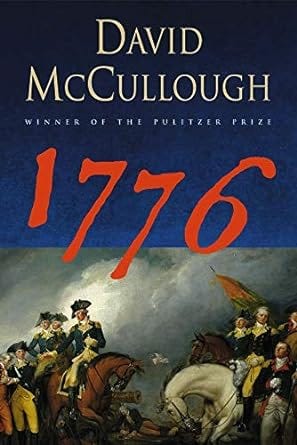
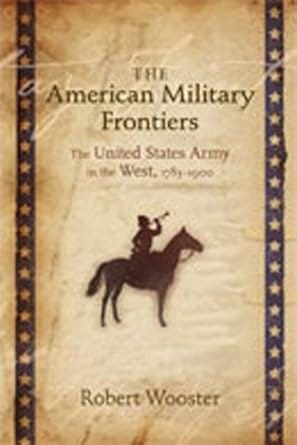
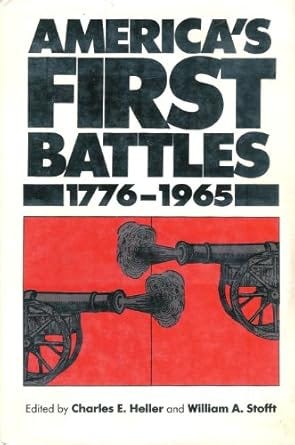
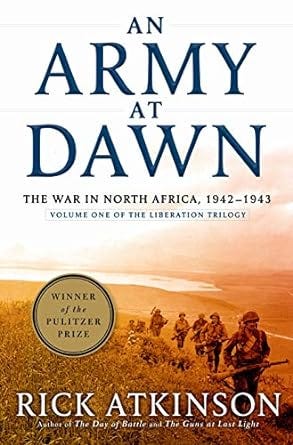
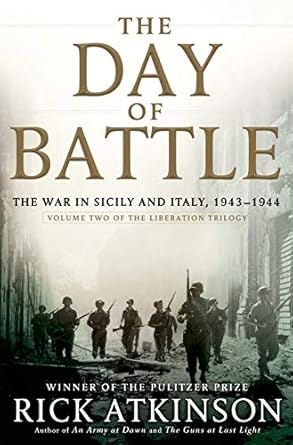
I highly recommend Atkinson’s three volume history. I read it at the same time as I read Jeff Shaara’s trilogy of novels covering the same period and at times it was hard to be sure which author I was reading! I’ve got the first volume of Atkinson’s history of the American Revolution and am waiting impatiently for volumes 2 and 3!
Thanks very much for your articles which I find most interesting and informative.
If I might venture a comment; to suggest that the British in 1776 had ‘the world’s most powerful military’, is slightly less than accurate.
The French army at the time, for example, numbered around 400,000 men vs 50,000 for the British, reflective of France’s far larger population. The Royal Navy, while a powerful force, had not yet reached the level of overwhelming superiority that it achieved 25 years later (after Trafalgar), and was no match for the combined fleets of Britain’s European adversaries.
Thank you once again.